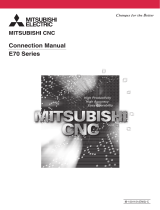Table of Contents
1 Important Notes .................................................................................................................................... 4
1.1 Safety Instruction .......................................................................................................................... 5
1.1.1 Symbols ................................................................................................................................... 5
1.1.2 Safety Notes ............................................................................................................................. 5
1.1.3 Certification .............................................................................................................................. 5
2 Specification ......................................................................................................................................... 6
2.1 RIO3-CU24L................................................................................................................................. 6
2.1.1 Wiring Diagram ......................................................................................................................... 6
2.1.2 LED Indicator ............................................................................................................................ 7
2.1.3 Channel Status LED ................................................................................................................. 7
2.1.4 Specification ............................................................................................................................. 8
2.1.5 Mapping data into the image table ............................................................................................ 9
2.1.6 Configuration Parameter Data – 4byte .....................................................................................11
3 Environment Specification ....................................................................................................................12
4 Dimension............................................................................................................................................13
4.1 10-Pts. Spring Type .....................................................................................................................13
5 Mounting ..............................................................................................................................................14
5.1 I/O Inserting and Removing Devices ............................................................................................14
5.2 RTB (Removable Terminal Block) ................................................................................................15
6 G-Bus Pin Description ..........................................................................................................................16
7 APPENDIX A .......................................................................................................................................17
7.1 Product List .................................................................................................................................17
7.2 Glossary ......................................................................................................................................17

















